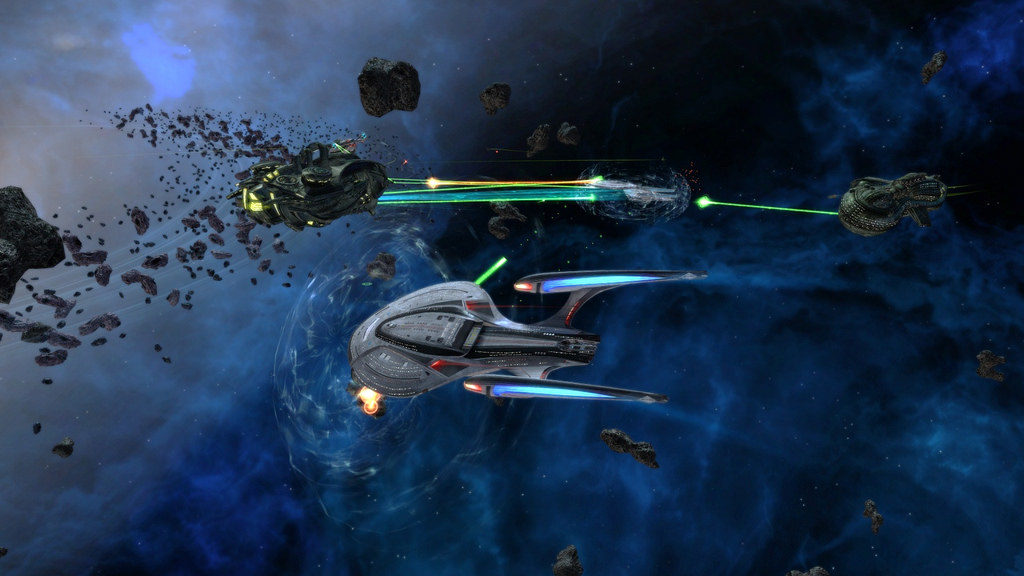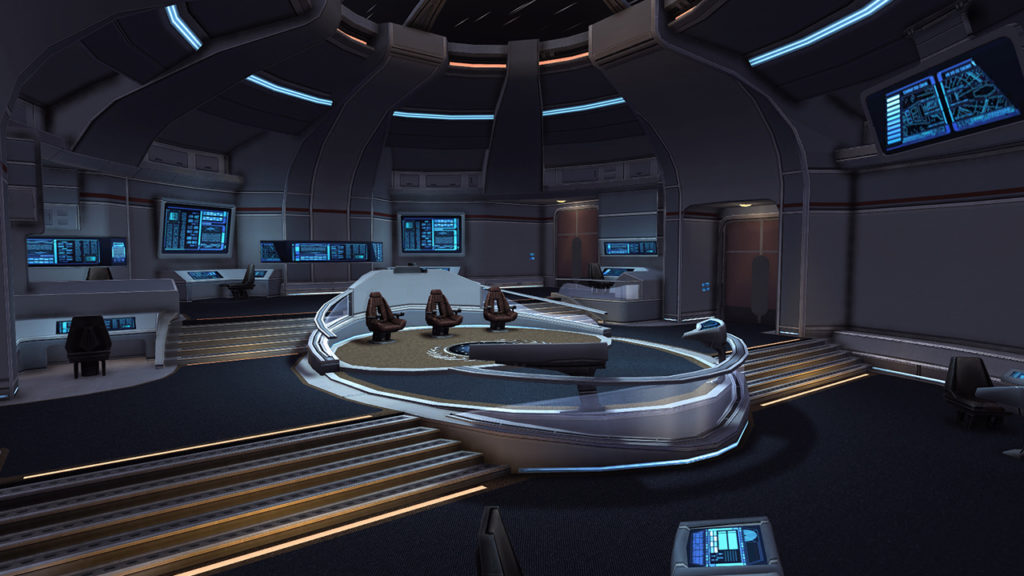Free Games in Focus Part 1: Star Trek Online
As I have previously mentioned, there are many ways to get more for your money by either making your own fun or playing games which give more time for your cash investment. One of the games I mentioned was Star Trek Online and its mission creation system. Now I would like to delve deeper into the game itself.
Initially launching on PC in 2010, going Free to Play in 2012 and launching on Xbox One and PS4 in 2016, Star Trek Online is one of many licensed MMOs which switched from a subscription to a free-to-play model after several years in operation and presumably falling revenue to the point where such a conversion was the only financially sensible decision. The mindset behind reworking a game to make it fit a new business model is generally driven by the impetus to get more people in and therefore looking at and potentially spending money on items, services and benefits offered to recoup development/maintenance costs from players who have paid nothing to get in in the first place.
As clearly indicated by the name, Star Trek Online is an MMO set in the Star Trek universe. Players can be either a Federation, Klingon or Romulan captain with their own ship and crew, flying around the galaxy on episodically-structured missions which form part of a larger overarching plot that draws on Star Trek’s extensive history.

What makes STO stand out is its combination of ground and space combat. The former playing much like conventional character-based MMO combat while the latter plays like naval combat in space. Every ship has forward and rear-facing weapons whose firing arc is inversely proportional to their damage output; for example a single phaser beam has an arc of 270 degrees while dual heavy cannons have an arc of 45 degrees, however they are much more potent. Your ship’s defensive systems work the same way too, your ship’s shields have different facings and a lot of the skill of surviving is managing your shield levels and turning to hide damaged shields from oncoming fire while they regenerate or are repaired.
Character progression is split between upgrading the equipment of your captain, bridge officers (who come with you on ground missions and whose abilities you use in space combat) as well as your ship itself; adding new weapons, armour, shields etc. This gear progression is denoted in increasing ‘mark’ levels; you start with mark 1 equipment and by maximum level (60) this increases to mark 12-14. Regardless of your faction choice the progression is largely the same. You start off with a very small ship with limited weapons and equipment. Every 10 levels up to level 40 you can pick a free ship from a limited selection of the next tier up. For the Federation this includes ships of the same class as many of the Enterprises as well as Voyager, however as you level these ships become mechanically obsolete, which is where the micro-transactions come in, which I will talk about later. Similar ship choices are available for the Romulans and Klingons, however there are many more examples of ship classes made up specifically for the game. So how does this free game make enough money for the developers to stay in business and to justify porting it to current-generation consoles? What can you do for free and what requires real money investment?
To answer any of these question it is necessary to unpack the overlapping currencies and systems at the heart of STO. The game has 3 major currencies which have a surprisingly complex relationship. Energy Credits, or EC, is the basic currency of the game; its what players will use to buy items from the Exchange, the game’s auction system, as well as what they will receive when selling junk item to vendors. Dilithium is an intermediary currency between EC and the real-money currency Zen. Dilithium is used to buy advanced upgrades through STOs reputation and fleet (guild) systems and is a time-gate to progress. Players can accumulate as much unrefined dilithium as they like but can only turn a finite amount per day – 8000 – into its refined and usable form. Zen is the currency which players can buy for real money and is used to purchase ships, account upgrades as well as keys for the game’s lockbox system which will be discussed later. Also Dilithium and Zen can be exchanged for each other however their prices are sensitive to rampant inflation caused by supply and demand.

This mixture of interrelated currencies is a bit of a mess, a symptom of the game’s reworking to a fundamentally new business model. Part of this model has included the introduction of lockboxes; blind-bags which can only be opened by purchasing keys for real money or from the exchange for EC. Many of the items in these boxes are highly desirable ships and equipment from various alien races who are relevant in the ongoing story at the time. If you just want to play a Star Trek game as a Federation, Klingon or Romulan captain with their standard ships then you can ignore these systems completely. However if you want to fly niche Ferengi, Cardassian, Undine or ships from the JJ Abrams series reboot for example, the costs start to rise exponentially due to the rarity of said ships and the constant inflation of the EC auction house economy.
Fortunately this approach is completely viable as you can follow the entire story from the beginning without paying anything. Since going Free-To-Play the levelling process has been smoothed out and the ships and equipment you get on the way are perfectly capable of seeing you through; several episodes and chains of episodes offer gear sets which you get from replaying a particular mission several times or from playing a complete arc.
As much as it is possible to play STO without paying a single penny – you can do all the story content, join a fleet, level up the various reputation factions and complete the basic versions of all the PVE group content, there are a few one-off purchases which are worthwhile. One of the biggest limitations free players have is a ten million EC cap and no way to transfer account-bound items between characters. That number sounds like a lot, however if you want to get into buying or selling more expensive ships/equipment then it becomes a serious hinderance; spending 500 zen on raising it to one billion EC (real money prices vary per country and over time) is a sound one-off purchase as it applies to all characters on your account.
Another good value option is to subscribe to the game for one month; even though it is Free to Play you can still pay a monthly subscription which gets you a stipend of Zen currency as well as exclusive items and ships. However paying for a subscription also unlocks numerous inventory/capacity upgrades for characters, ships, inventory and bank space, including bank slots which can be used to send items between characters; which would cost more than the £/$6-7 subscription for a single month and they stay with your account once you go back to being a free player.
It is only necessary to spend any more than that if you are interested in absolutely min-maxing your characters or taking on group PVE content on the highest difficulty. STO’s PVP scene is very small and requires significant investment beyond the means of the average free player, so is not being considered in this assessment of the game’s model.
If you are a Star Trek fan looking for something to play then STO is currently the only Star Trek game going on PC or Xbox One and PS4. It has a lot of good ideas, is worth at least checking out, providing you accept the caveats and limitations of its F2P model.





